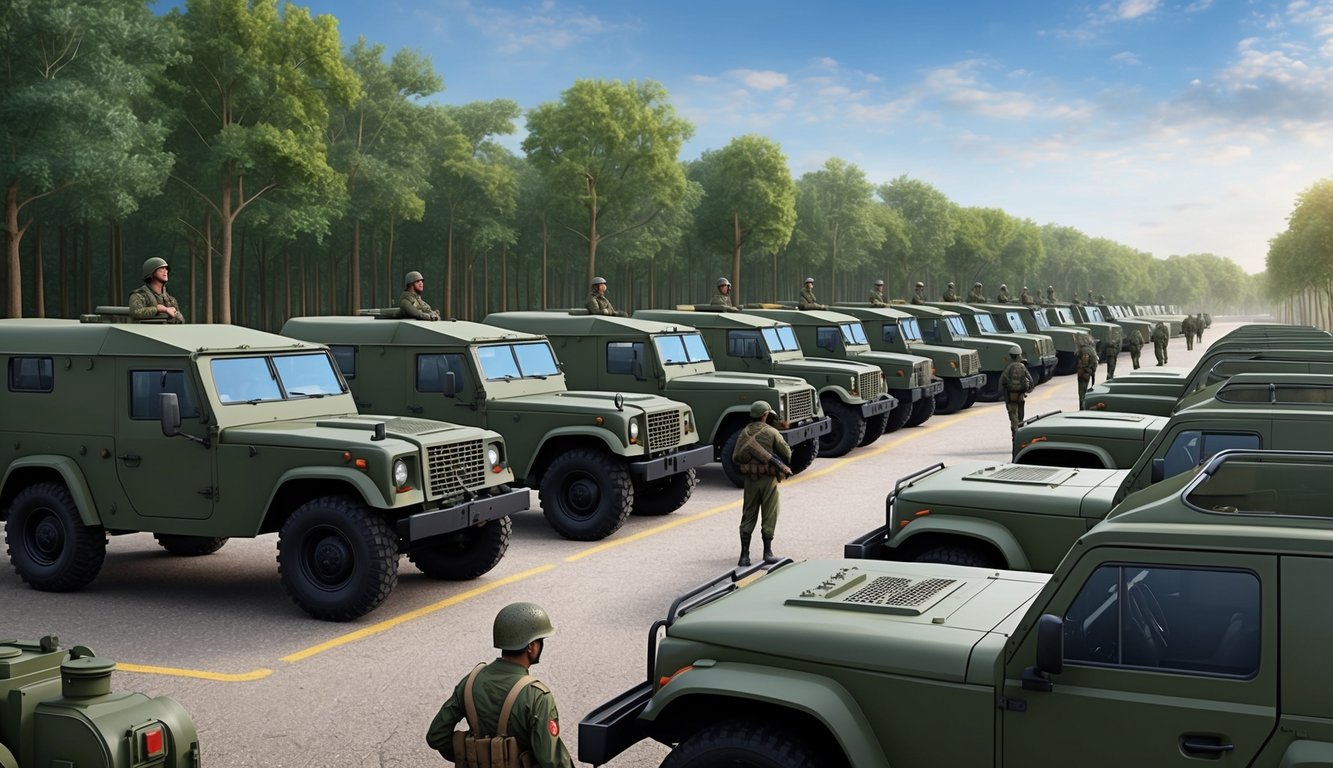Romania’s military has experienced a remarkable transformation in recent years, evolving to meet modern challenges and enhancing its capabilities.
Since becoming a NATO member in 2004, Romania has taken on a vital role in regional security and defense collaboration.
The Romanian Armed Forces consist of the Land Forces, Naval Forces, and Air Force, collectively ranking 47th out of 145 countries in global military strength for 2024.
Strategically located near the Black Sea and adjacent to areas of ongoing conflict, Romania’s military significance has amplified within the region.
Joint exercises with U.S. troops exemplify Romania’s commitment to alliance readiness and interoperability, often conducted near its borders to serve as both a deterrent and a demonstration of its resolve to maintain regional stability.
As it continues to modernize, Romania’s government is planning substantial upgrades in military equipment.
In 2024, upcoming deals for new fighting vehicles and howitzers signal a strong dedication to enhancing combat capabilities and advancing technology.
These investments underline Romania’s commitment to fulfill its NATO obligations and protect its national interests amid a changing geopolitical landscape.
### Key Takeaways
– Romania’s military stands 47th globally, with its Land, Naval, and Air Forces working in unison to ensure national security.
– Joint exercises with NATO allies, especially the U.S., bolster Romania’s defense capabilities and regional influence.
– Ongoing modernization efforts, including the acquisition of new equipment, reflect Romania’s commitment to military readiness.
### Historical Context of Romania’s Military
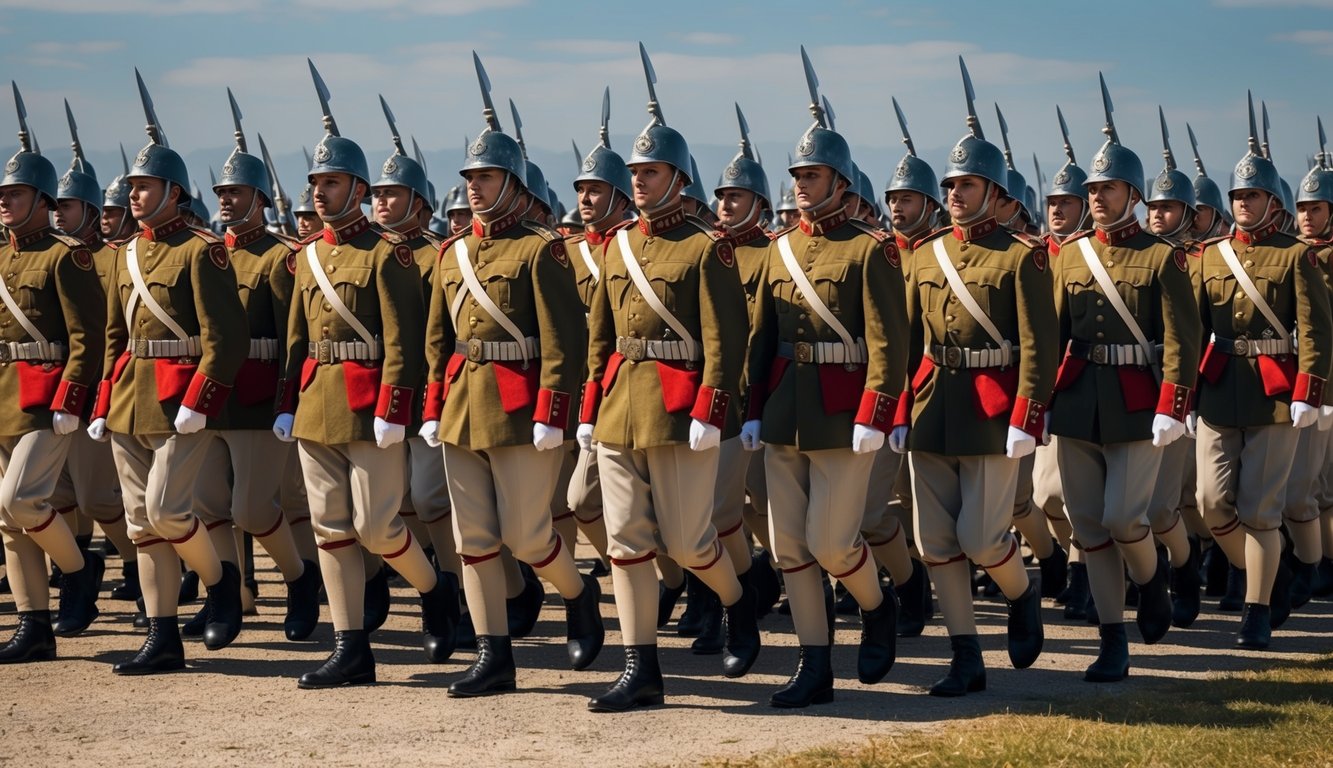
Romania’s military history reflects a narrative of struggle, resilience, and evolution.
From achieving independence to navigating global conflicts and political changes, Romania’s armed forces have been pivotal in shaping its national trajectory.
### Romanian War of Independence
The Romanian War of Independence in 1877 marked the beginning of the country’s pursuit of military autonomy.
Romanian forces fought alongside Russian troops against the Ottoman Empire, with the siege of Plevna being a critical moment demonstrating the valor of Romanian soldiers.
This war established Romania’s status as a sovereign nation and laid the groundwork for its modern military.
King Carol I was instrumental in this transformation, modernizing the military and establishing a more organized and professional force.
### World War I and Romania
At the onset of World War I, Romania initially opted for neutrality but joined the Allies in 1916.
This decision dramatically impacted the Romanian military and the country’s future.
Key battles, such as those at Mărăști and Mărășești in 1917, showcased Romania’s military strength, allowing its forces to repel German advances despite challenging circumstances.
These successes uplifted morale, highlighting the fighting spirit among Romanian soldiers.
However, the toll of the war was severe, culminating in a harsh peace treaty with the Central Powers in 1918 that reshaped Romania’s borders and military strategy.
### Interwar Period and World War II
In the years between the two world wars, Romania focused on reconstructing and modernizing its military, seeking to maintain its newly enlarged borders, including Bessarabia, obtained after World War I. However, this era was fraught with political instability and shifting alliances.
World War II presented severe tests, where Romania initially allied with Nazi Germany, partaking in Operation Barbarossa against the Soviet Union.
Romanian forces advanced into Soviet territory, reaching Stalingrad alongside Axis troops.
As the war turned against Germany, Romania switched sides in 1944, contributing to the Allied victory and significantly impacting the nation’s post-war landscape.
### Post-World War II Developments
The aftermath of World War II brought substantial changes to Romania’s military, influenced heavily by Soviet doctrine.
The armed forces were realigned according to Soviet models, incorporating new equipment and strategies.
Romania’s relationship with the USSR was complex; it was officially part of the Warsaw Pact but frequently pursued an independent foreign policy, affecting military strategies and equipment choices.
With a focus on territorial defense, the Romanian military prepared for potential NATO threats, shaping training and force structuring for decades.
### Romania in the Post-Cold War Era
Following the fall of communism in 1989, Romania’s military charted a new course, aligning itself with Western alliances and joining NATO in 2004—a pivotal shift that necessitated extensive reforms.
Since then, Romanian forces have engaged in numerous international missions, from peacekeeping to coalition operations in Iraq and Afghanistan, gaining vital experience in modern warfare.
Presently, Romania’s military persists in modernization efforts to adapt to evolving security challenges, bolstered by its strategic positioning on the Black Sea and NATO membership.
### Structure and Composition of Romanian Armed Forces
Romania’s military is organized into three primary branches, alongside specialized units that are crucial for national defense and contribute to international missions.
### The Romanian Land Forces
Romania’s Land Forces are foundational to the military, comprising infantry, armored units, and artillery.
The infantry serves as the backbone, with soldiers trained for various combat scenarios, enhanced by tanks and armored vehicles for improved mobility and firepower.
Artillery units offer essential long-range support.
Significant modernization efforts are underway, with equipment like the TR-85M1 main battle tank and MLI-84M infantry fighting vehicle now in active service, alongside various artillery systems including howitzers and multiple rocket launchers.
Training emphasizes joint exercises with NATO allies to foster interoperability and skills enhancement.
### The Romanian Air Force
The sky above Romania features a mix of Soviet-era and Western aircraft.
The Air Force’s prowess includes F-16 fighters, providing a modern air defense capability.
Transport aircraft such as the C-27J Spartans support logistics, while helicopters fulfill diverse roles from combat to search and rescue missions.
Air defense systems are essential for safeguarding airspace, with a blend of older Soviet designs and newer Western technologies.
Upgrades are ongoing, with plans for additional F-16 acquisitions and potentially F-35s.
### Naval Forces of Romania
Romania’s Naval Forces patrol its Black Sea coastline, operating a fleet of frigates, corvettes, and smaller patrol boats.
Frigates, including those acquired from the UK, serve as the largest vessels in the fleet, designated for patrolling and international missions.
Coastal defense is primarily handled by smaller vessels, such as corvettes and missile boats, while minesweepers ensure safe shipping routes.
The naval component also comprises marine infantry units tasked with amphibious operations and coastal defense.
### Special Operations and Other Units
Romania’s military includes elite special operations units trained for high-risk missions.
The Special Operations Forces specialize in counter-terrorism and reconnaissance, while the Military Police maintain security and discipline within the ranks.
Support units comprising logistics, communications, and medical services are vital for maintaining military operations.
Cyber defense remains a growing focus, with Romania investing in capabilities to counter digital threats.
### Military Alliances and Deterrence
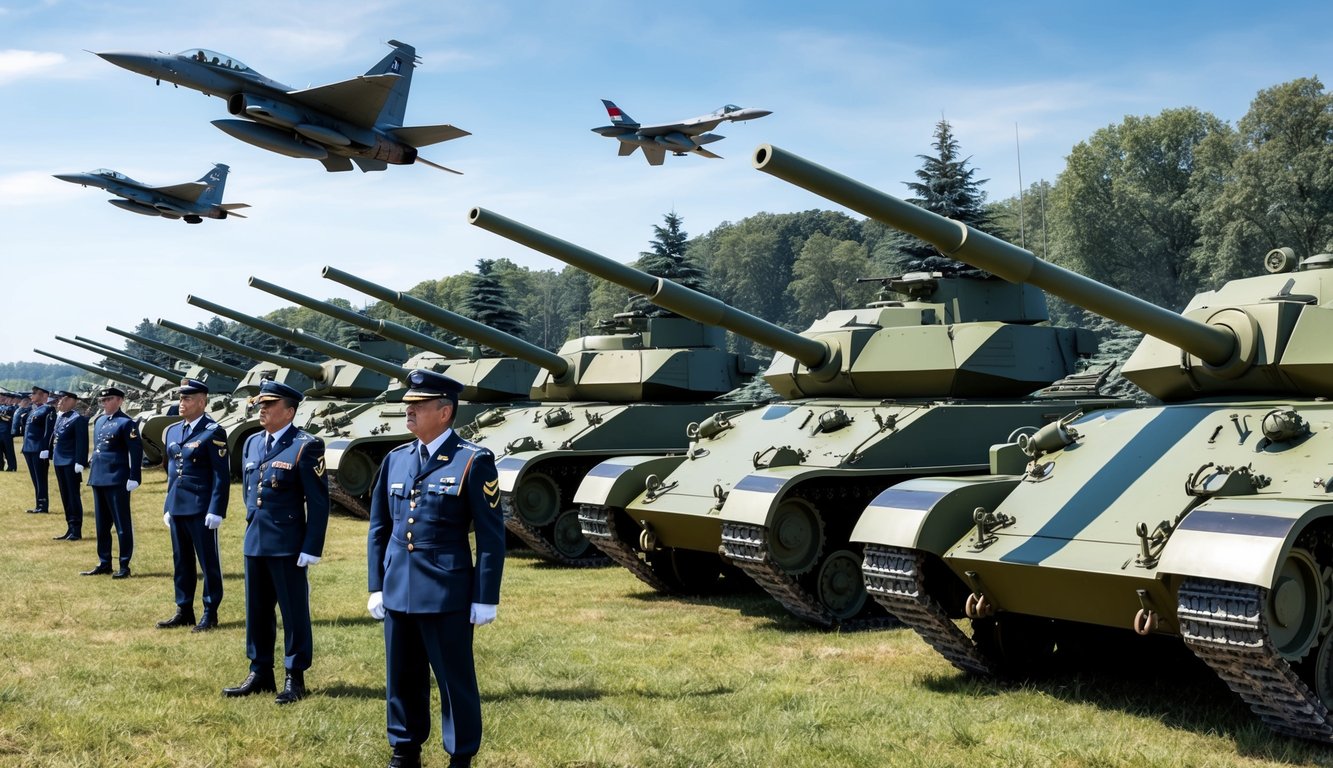
Romania’s strategic relationships and defense collaborations significantly reinforce regional security.
The country’s military alliances emphasize strengthening NATO’s eastern flank and fostering cooperation with key allies, notably the United States.
### Romania’s Relationship with NATO
Romania’s accession to NATO in 2004 marked a crucial advancement in its defense strategy.
As a member, Romania plays an active role in collective defense, hosting multiple NATO facilities, including a multinational brigade in Craiova and a missile defense system in Deveselu.
Notably, a new NATO base is being constructed at Mihail Kogălniceanu, representing a €2.5 billion investment that will establish the largest NATO base in Europe, enhancing military operations and training activities for the alliance.
Romania consistently meets NATO’s defense spending benchmark, allocating 2% of its GDP to military expenditures, with plans to raise this to 2.5% in 2023, underscoring a commitment to strengthening its military capacity and supporting NATO objectives.
### Cooperation with the United States
Understanding Romania’s military partnerships necessitates recognizing its strong alliance with the United States, a key supporter through various defense cooperation programs.
Active Foreign Military Sales (FMS) cases are valued at approximately $6.2 billion, involving the acquisition of U.S.-origin defense supplies and services to modernize Romania’s military capabilities.
U.S. troops regularly rotate through Romanian installations, engaging in joint exercises that enhance interoperability and act as a deterrent to potential threats.
The Mihail Kogălniceanu Air Base has become a strategic hub for U.S. operations in the Black Sea region, exemplifying the robust military partnership between Romania and the U.S.
### Regional Stability and the Black Sea
Romania’s role in ensuring regional stability is critical, given its strategic location along the Black Sea.
As a NATO member along this key waterway, Romania is integral to the alliance’s southeastern defense posture.
The military strategy underscores the importance of securing the Black Sea, working closely with NATO allies to counter potential threats, especially from Russia.
Key activities include naval exercises, air policing, and maritime surveillance.
Romania’s support for neighboring Ukraine amid its conflict with Russia includes humanitarian assistance and diplomatic backing, contributing to broader regional stability efforts.
By bolstering military capabilities and fostering international partnerships, Romania aims to deter aggression and promote peace in the Black Sea area, aligning with NATO’s broader strategies for Eastern Europe and reinforcing its own role in ensuring regional security.
### Defense Economics and Infrastructure
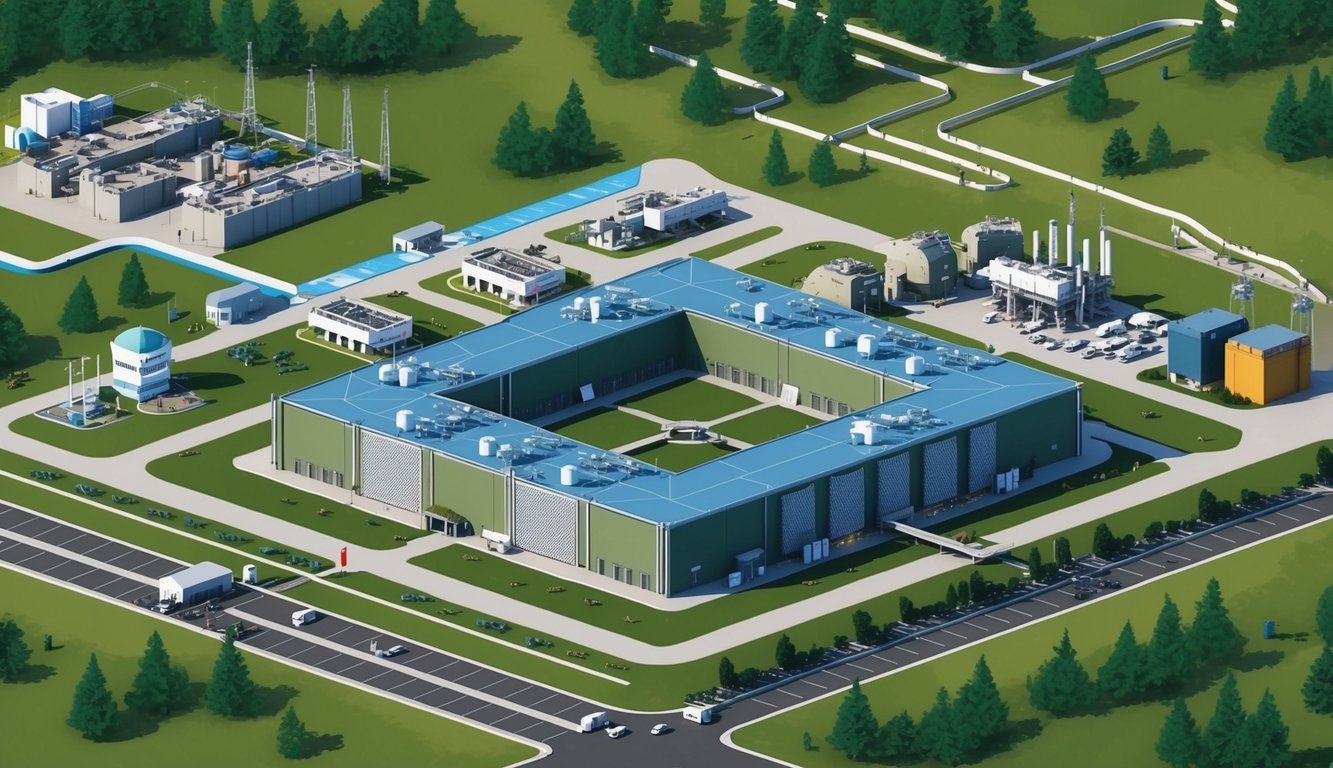
Romania’s military landscape is in significant flux, with the nation increasing defense spending, enhancing infrastructure, and modernizing equipment to strengthen its NATO and EU position.
### Romania’s Defense Budget
Romania demonstrates impressive commitment to defense, consistently allocating over 3% of its GDP to military expenditures, exceeding NATO’s 2% guideline.
This dedication has resulted in an astounding 53.3% increase in defense spending since 2023.
Plans to invest about $46.3 billion in defense from 2025 to 2029 signify the nation’s resolve to enhance its military capabilities and contribute to regional security.
### Investment in Military Infrastructure
Romania is advancing its military infrastructure with prominent projects, including the establishment of a NATO base designed to support up to 10,000 soldiers, reinforcing Romania’s critical role in the eastern defense coalition.
Existing bases are also undergoing upgrades to improve training facilities, logistics hubs, and command structures.
These enhancements not only elevate Romania’s defensive strength but also fortify NATO’s collective capabilities in the Black Sea region.
### Modernization of Military Equipment
An extensive and impressive acquisition strategy characterizes Romania’s military modernization efforts.
Key areas of focus include upgrading armor, towed artillery, and air defense capabilities.
Partnerships with industry leaders such as Rheinmetall and France will facilitate the procurement of advanced equipment, including new armored vehicles and sophisticated radar and artillery systems.
The air force also targets modernization, with ongoing purchases of F-16 fighter jets as part of a broader initiative to cultivate a more agile and technologically advanced military organization.
### Key Military Personalities and Leadership
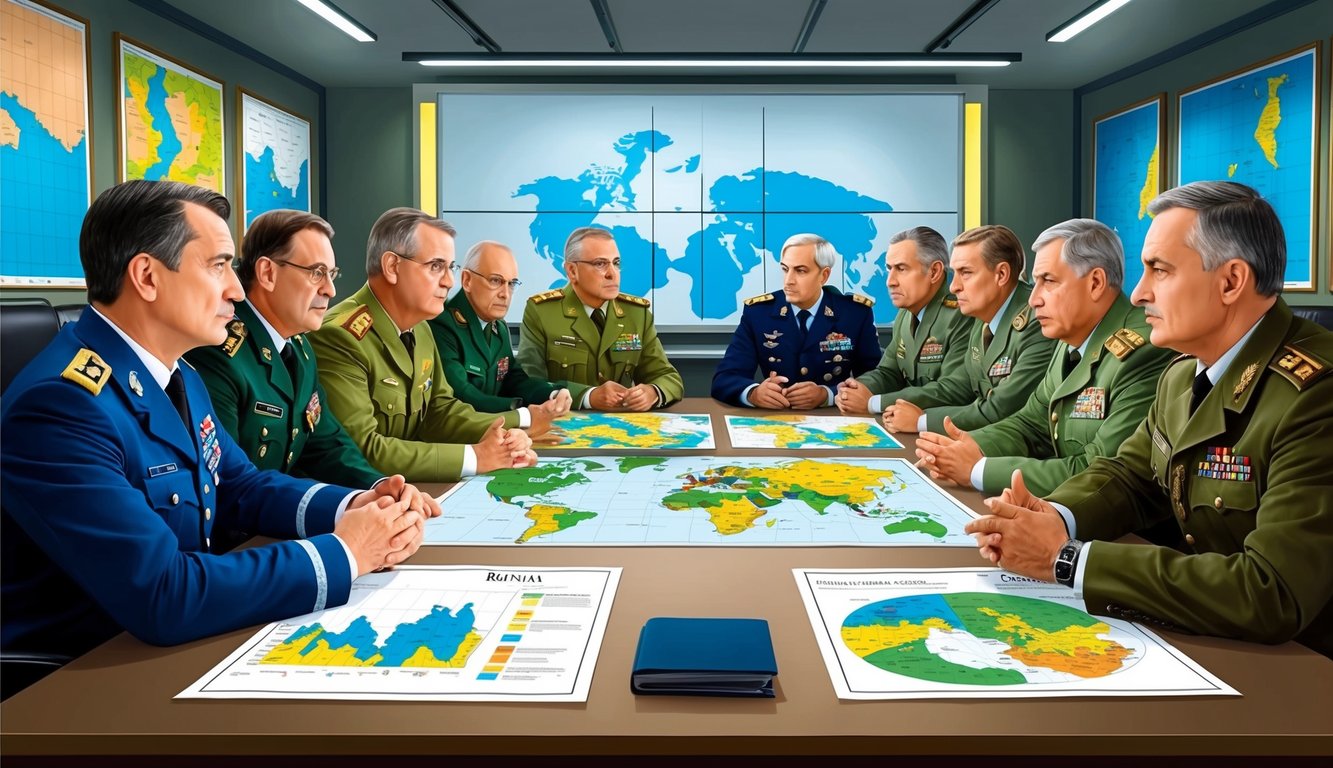
Romania’s military history has been influenced by key leaders.
In the contemporary sphere, new commanders are guiding national defense strategies and capabilities.
### Historical Military Leaders
Marshal Constantin Prezan is a notable figure, serving as Chief of the General Staff during World War I and leading Romanian forces against the Central Powers with strategic effectiveness.
King Ferdinand I’s leadership during WWI also proved vital, helping to unify the nation and strengthen military positioning.
General Ion Antonescu emerged later as a controversial leader, commanding Army Group Antonescu on the Eastern Front during WWII, aligning Romania with Nazi forces before being overthrown in 1944.
### Contemporary Leadership
Romania’s current military leadership operates under civilian authority, with President Klaus Iohannis as Supreme Commander of the Armed Forces, a key constitutional role.
Minister of National Defence Angel Tâlvâr oversees operations and policy implementation, collaborating closely with NATO partners to modernize military capacities.
The Chief of the Defence Staff leads the armed forces, managing joint operations and representing Romania in international military contexts—vital for maintaining readiness amid evolving regional security concerns.
### The Role of Romanian Citizens in Military Evolution
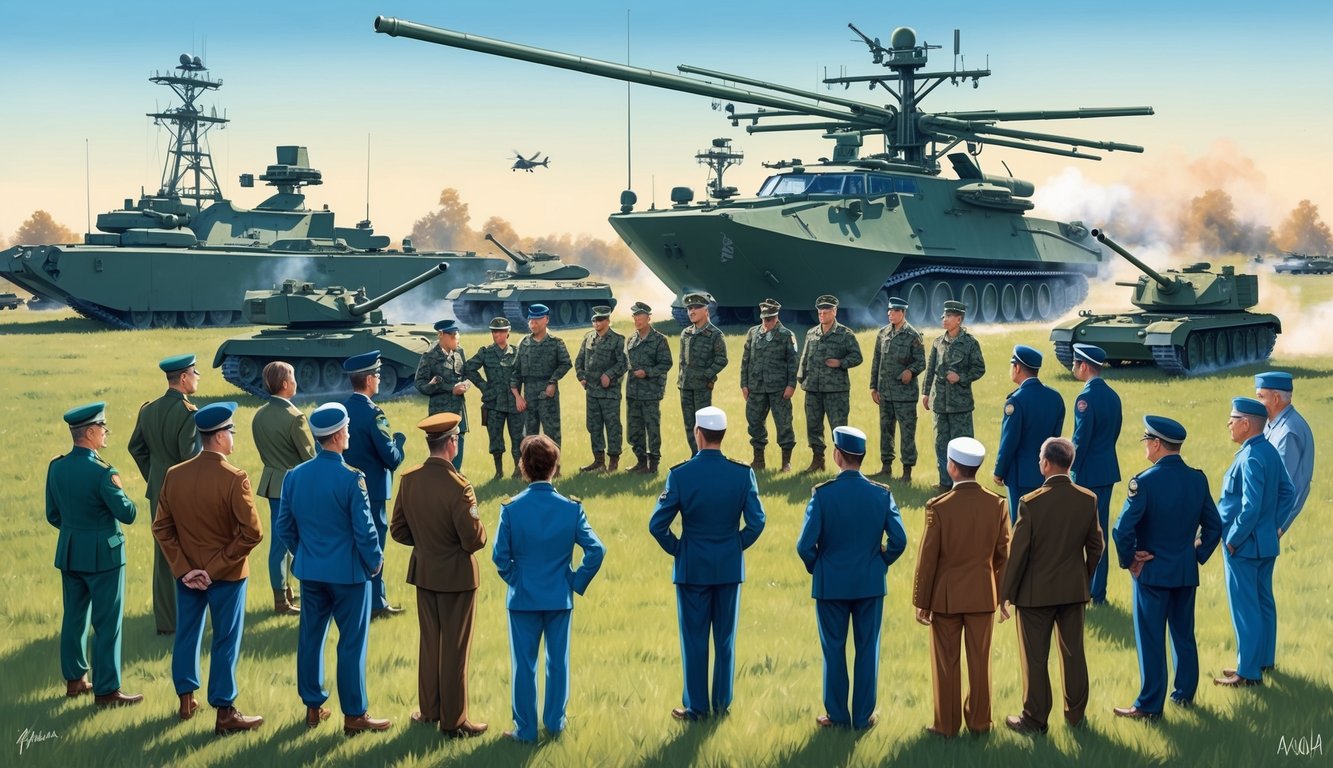
The evolution of Romania’s military has significantly involved its citizens, through both mandatory service and community support, impacting the armed forces’ development.
### Conscription and Public Perception
Romania has a history of mandatory military service, requiring young men to serve upon turning 18—a practice that ended in 2007.
This ensured a large standing army and fostered a sense of national duty.
Public opinion on conscription was varied; while some viewed it as a rite of passage, others saw it as a hardship.
The Wallachian Revolution of 1848 marked a shift toward emphasizing patriotism and national identity within military service.
Currently, military service is voluntary, leading to a more specialized and professional force.
Nonetheless, debates about the value of conscription versus an all-volunteer military continue among older Romanians.
### The Impact of Military Service on Society
Military service has profoundly impacted Romanian society, shaping personal development and national identity.
Experiences during service foster unity and purpose among diverse groups.
Skills learned in the military, including discipline and teamwork, often translate to civilian life, with many veterans taking on leadership positions in their communities.
The influence of the armed forces can also be seen in various cultural expressions, from popular music to national celebrations, highlighted during events like Army Day, where citizens come together to honor military contributions.
### Frequently Asked Questions
Romania’s military has several unique features that often pique interest.
Here are responses to some common questions regarding enlistment, capabilities, equipment, special forces, size, and uniforms.
#### How can someone enlist in the Romanian Army?
To enlist in the Romanian Army, you must be a Romanian citizen aged 18-35.
Applicants need to pass physical and psychological evaluations, maintain a clean criminal record, and meet educational requirements.
The recruitment process includes submitting an application, medical examinations, and completing basic training.
#### What are the current capabilities of Romania’s military?
Romania’s military emphasizes defensive operations and NATO cooperation, with notable modernization improvements concerning air defense systems, cyber capabilities, and naval forces.
It is actively engaged in international peacekeeping efforts and participates in NATO exercises.
#### What equipment is utilized by the Romanian Army?
The Romanian Army employs a combination of Soviet-era and Western equipment, including TR-85 tanks, MLI-84 infantry fighting vehicles, and diverse artillery systems.
The Air Force operates F-16 fighter jets, C-27J Spartan transport aircraft, and IAR 330 helicopters.
#### What is the name of the elite Special Forces unit in Romania?
The primary special forces unit in Romania is the 6th Special Operations Brigade “Mihai Viteazul,” specializing in counter-terrorism, hostage rescue, and unconventional warfare, with participation in NATO operations and joint exercises.
#### How large is the Romanian military force?
As of 2024, Romania’s active military personnel number approximately 70,000, comprising army, air force, and naval sectors.
Additionally, around 50,000 reserve personnel exist, with ongoing efforts to bolster force size to meet NATO commitments.
#### What are the distinctive features of the Romanian Army uniform?
The Romanian Army uniform typically sports a digital camouflage pattern in green, brown, and tan.
The combat uniform includes a beret or field cap, combat boots, and rank insignia.
For formal occasions, a dress uniform featuring a peaked cap is worn.

